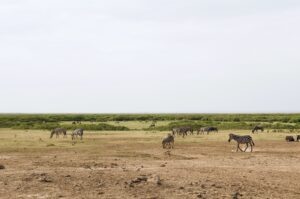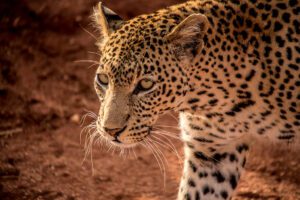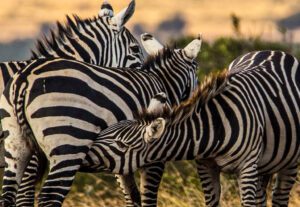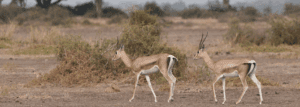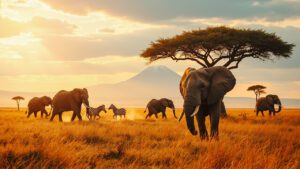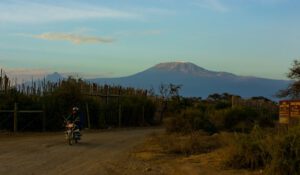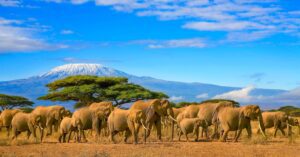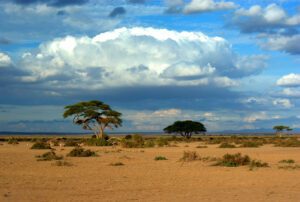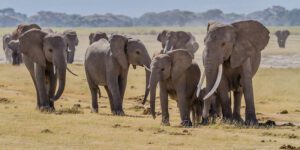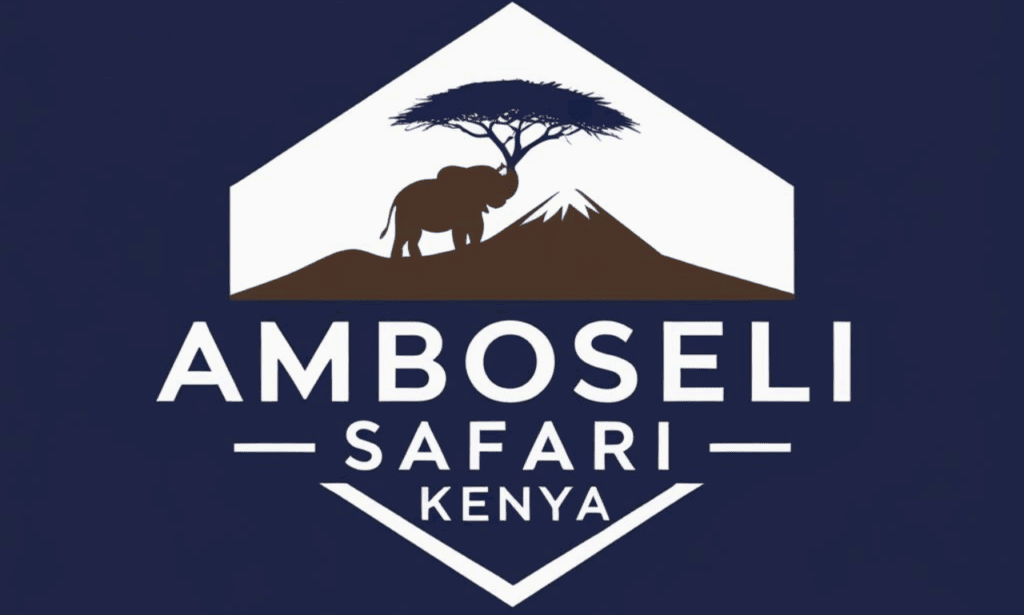Have you ever dreamed of getting up close to some of the most majestic animals on Earth, elephants, and learning all about them? The Amboseli Elephant Research Camp in Kenya is like a backstage pass to the incredible world of elephants! It’s one of the most famous places in the world for studying these gentle giants and understanding how they live, think, and thrive in the wild. But why does this place matter, and what makes it so special? Let’s break it down in the simplest and most fun way, so you can see why people are so excited about this one-of-a-kind camp!
What is the Amboseli Elephant Research Camp, and what is its purpose?
The Amboseli Elephant Research Camp is a scientific facility dedicated to studying and protecting African elephants, making it a premier site for elephants research in East Africa. As part of the Amboseli Elephant Research Project (AERP), the longest-running elephant research project globally since 1972, the camp’s primary objective is to monitor and understand the lives of undisturbed elephants in Amboseli National Park, Kenya, allowing scientists to safeguard their environment.
The camp aims to gather long-term data about elephant behavior, family structures, and communication. Researchers at the camp meticulously track specific individuals and families over years, sometimes decades, getting to know these elephants by sight and recognizing them by unique features like the shape of their tusks or ears. This detailed observation enables scientists to understand their social behavior and relationships within the herd.
The broader mission of the camp is conservation. By learning extensively about elephants, researchers can identify threats like poaching and habitat loss, and create effective strategies to protect these vulnerable animals. For example, understanding which areas of the Amboseli area elephants frequent most helps in establishing safe spaces for them. This information also supports global elephant news initiatives, ensuring that everyone, from scientists to the general public, comprehends the importance of protecting these soulful creatures.
In summary, the Amboseli Elephant Research Camp is committed to ensuring elephants thrive not only in their local environment but throughout Africa. By studying them in remarkable detail, the camp works tirelessly to secure the future of this magnificent species, making it an amazing opportunity for anyone interested in wildlife conservation.
Where is the Amboseli Elephant Research Camp located?
The Amboseli Elephant Research Camp is located in Amboseli National Park in southern Kenya, near the border with Tanzania. This park is one of the most famous wildlife areas in East Africa, renowned for its large population of African elephants and stunning views of Mount Kilimanjaro, Africa’s tallest peak. The location is ideal because Amboseli is home to diverse habitats like savannahs, swamps, and woodlands, which support not only elephants but also an incredible variety of other wildlife such as lions, cheetahs, zebras, and giraffes. Visitors can book a Kenya safari to experience this amazing opportunity firsthand.
The camp itself is set within the national park in a remote location, so researchers have direct access to the elephants and their habitat. Amboseli National Park covers an area of around 392 square kilometers (about 151 square miles), giving the elephants plenty of room to roam freely. However, because the park is bordered by human settlements, it’s important for the camp to study how elephants interact with local communities and their livestock.
A key reason why this location is so significant is the presence of both natural ecosystems and human pressures. Elephants in Amboseli are known to migrate in and out of the park, following ancient paths to find food and water. This means that researchers at the camp are not only studying one group of elephants in one place, they also need to understand how these animals move between protected areas and interact with humans, particularly the Maasai people.
In short, the Amboseli Elephant Research Camp doesn’t just work in any random spot: its location right in the heart of this iconic national park makes it a perfect home base for studying undisturbed elephants in their natural environment while also addressing the challenges they face from nearby human developments.
What kind of research is conducted at the camp?
The research conducted at the Amboseli Elephant Research Camp focuses on understanding almost every aspect of elephant life and behavior to protect and conserve these amazing animals. Much of this research is based on long-term studies, meaning scientists have been tracking some of the same elephants and their families for decades. For example, detailed records are kept on their births, deaths, who their mothers are, and even what kind of social bonds they have.
One significant area of study is elephant behavior. Researchers observe how elephants interact within their families and between different herds. They’ve learned, for example, that these soulful creatures have incredibly strong family units, led by older females called matriarchs. Scientists also observe how elephants communicate using vocalizations, body language, and even low-frequency sounds humans can’t hear.
Another major area of research is migration patterns. By tracking where elephants move throughout the year, researchers can figure out what resources they need, like food and water, and identify important routes they use. This helps with conservation planning, like making sure wildlife corridors (safe paths for migration) stay open.
Scientists at the camp also study elephant health and genetics. For instance, they might collect dung (elephant poop) to analyze DNA and hormones to learn about stress levels, overall health, or family trees. This kind of research is crucial because it can help pinpoint challenges like disease or the impact of climate change on elephants.
Finally, the camp looks at human-elephant interactions. Elephants often face danger from poaching, habitat loss, or conflicts with farmers over crops. Researchers study these issues and work on projects to solve them, like developing ways to keep elephants out of farms without harming them, which is essential for community outreach initiatives.
In conclusion, the Amboseli Elephant Research Camp conducts a wide variety of studies to better understand elephants and keep them safe in a changing world. Their work has global importance because it helps protect not just Amboseli’s herds but also serves as a model for elephant conservation everywhere, inspiring others to visit and learn about these magnificent animals.
Who operates or manages the Amboseli Elephant Research Camp?
The Amboseli Elephant Research Camp is operated and managed by the Amboseli Trust for Elephants (ATE). This organization was founded by Dr. Cynthia Moss, a renowned researcher and conservationist, in 1972. The ATE is responsible for overseeing all activities at the camp, including conducting scientific studies, implementing conservation strategies, and ensuring the wellbeing of the elephant population in Amboseli National Park.
Primarily focused on the long-term study of wild elephants, the camp serves as the base for the Amboseli Elephant Research Project (AERP), one of the longest-running elephant research programs globally. Dr. Cynthia Moss and her dedicated team work tirelessly to ensure that the elephants in the region are studied, protected, and understood at a deeper level. This management helps maintain a balance between research, conservation, and education, making it an ideal lookout for observing these soulful creatures.
As a nonprofit organization, the Amboseli Trust for Elephants relies on donations, grants, and collaborations with international conservation groups to fund its operations. The trust also engages in community outreach, working closely with local communities to promote coexistence between humans and elephants. Collaborations with local leaders help prevent human-elephant conflicts and educate communities on the benefits of conserving wildlife and habitats.
In short, ATE is the driving force behind the Amboseli Elephant Research Camp, combining science, advocacy, and collaboration to protect these magnificent creatures. Without their management, extensive and groundbreaking elephant research would not be possible, which is crucial for the future of the African elephant.
What makes Amboseli National Park unique in terms of elephant populations?
Amboseli National Park is unique because it is home to one of the world’s most well-studied, well-protected, and accessible populations of wild African elephants. One of the key factors that make Amboseli’s elephant population so special is the extraordinary amount of data and knowledge collected about these animals through five decades of research by the elephants research camp and the Amboseli Trust for Elephants. This extensive elephants research has significantly contributed to our understanding of their social behavior and conservation needs.
The elephants here are known individually, by name, not just numbers. The research team has meticulously identified almost every single elephant in the park, tracking their family relationships, behaviors, and life histories. This allows scientists and conservationists to have a detailed understanding of how elephants live, interact, and thrive in the wild. For example, researchers have tracked entire family trees for multiple generations, providing deep insights into their societies and enhancing their community outreach efforts.
Another thing that makes Amboseli remarkable is that the elephants there are relatively safe compared to other regions of Africa. Thanks to the efforts of conservation groups, the park provides a haven where elephants are not as threatened by poaching. This safety has allowed researchers to observe how elephants behave naturally, without the constant fear of human predators affecting their actions.
Lastly, Amboseli National Park offers a stunning and diverse landscape, including swamps, savannas, and the breathtaking backdrop of Mount Kilimanjaro. This ecosystem supports a wide variety of wildlife, but elephants are the star of the show. The park is a crucial habitat for these giants, as it provides food, water, and space for their large communities to thrive, making it a prime destination for those looking to visit and experience the wonders of nature.
In short, Amboseli is a treasure for researchers, conservationists, and wildlife enthusiasts because it offers a window into the lives of elephants in one of the most natural and undisturbed settings possible, an increasingly rare sight in today’s world.
Can visitors interact with researchers or observe their work at the camp?
Visitors to Amboseli National Park usually cannot directly interact with researchers or observe their work at the elephants research camp, as it is a working research station, not a tourist facility. The camp needs to maintain a controlled environment to protect the integrity of its research and to focus on its conservation efforts without interruptions. That being said, there are some indirect ways in which visitors can engage with or learn about the research being conducted there.
For example, the Amboseli Trust for Elephants occasionally organizes talks, events, and workshops where researchers share their findings and experiences. These are opportunities for people to understand the research and conservation work happening in Amboseli. During such events, you might hear about topics like social behavior of elephants, migration patterns, or the challenges of human-elephant conflict. While these events are often held outside the camp environment, they are an excellent way to connect with the research indirectly.
Additionally, visitors can observe the elephants themselves while on safari in Amboseli National Park. This gives people the chance to see the same animal populations that are extensively studied by researchers. Guides or rangers who lead safaris in the park are often knowledgeable about the elephants and their behavior and can share insights that have been gathered through the work of the elephants research camp.
In some cases, special arrangements or educational programs might allow eco-tourists, students, or conservation supporters to gain a closer look at the work being done. However, these opportunities are typically limited and arranged on a case-by-case basis to minimize disruption to the elephants and the research process.
So while you can’t just drop by the camp and meet the researchers, there are still ways to engage with their work and learn about their incredible efforts to protect and understand elephants in Amboseli.
Are there specific programs or tours available for visitors at the camp?
Amboseli Elephant Research Camp itself is not a public tourist attraction, which means it does not operate like a typical wildlife safari lodge or tour company. Instead, it serves as a dedicated research station focused on the study and protection of African elephants. Visitors cannot simply book a tour of the camp like they would for other activities in Amboseli National Park.
That said, there may sometimes be special programs or educational opportunities that involve the camp indirectly, such as collaborations with nearby lodges or conservation groups. For example, tour guides or park rangers working in Amboseli might share some of the findings from the elephants research conducted at the camp. These partnerships often help visitors learn more about the important work being done without disrupting the researchers.
If someone is deeply passionate about learning from the camp or contributing to its mission, they may explore options like conservation-focused tours operated by organizations supporting the camp. These might include lectures, presentations, or field trips designed to educate visitors about elephant behavior, population dynamics, or the threats elephants face. Observing elephants in their natural habitats is an amazing opportunity to see these soulful creatures up close.
Overall, if you’re planning a visit to Amboseli and are interested in the camp’s work, it’s worth contacting conservation organizations in the area or researching lodges that prioritize elephant education. However, always be mindful that the primary focus of the camp is research, and any visitor programs will align with ethical, low-impact practices.
What are the conservation efforts or objectives of the camp?
The Amboseli Elephant Research Camp has a central mission: to protect elephants and ensure they have a future in a rapidly changing world. Its conservation efforts center around understanding elephant behavior, studying their social structures, and monitoring population trends. By gathering this data, particularly through the lens of elephants research, the camp creates a scientific foundation for protecting elephants both in Amboseli National Park and beyond.
For example, the camp studies the family groups of elephants, as they are incredibly social animals with tight familial bonds. By understanding how these groups interact, researchers can identify threats to their natural social systems, like habitat loss, poaching, or climate change. This knowledge is vital. If an elephant’s family is disrupted, it can cause huge stress for the animals and even impact their survival.
One key objective is reducing human-elephant conflict. As human populations expand, there are more instances where people and elephants come into direct competition for resources, like water or farmland. By tracking elephant migrations and behaviors, the camp provides data that helps communities and policymakers find ways to coexist peacefully with elephants, for example, planning migration corridors so elephants don’t stray into farmland.
Another vital part of the camp’s conservation efforts is advocacy. They use their research to influence governments and organizations to implement policies that benefit elephants. For example, their work contributes to global anti-poaching strategies, which protect Amboseli’s elephants from the illegal ivory trade, a critical aspect of the ongoing global elephant news.
Ultimately, the camp’s conservation efforts extend far beyond the park. They provide a model for elephant conservation worldwide and inspire partnerships to protect not just elephants, but the ecosystems they’re part of, contributing to a sustainable future for these soulful creatures.
How does the camp contribute to the protection of elephants and their habitats?
The Amboseli Elephant Research Camp has a huge impact on protecting elephants and their habitats through its work in research, advocacy, and collaboration. One of its main tools for protecting elephants is its long-term research on their behavior and populations. By gathering decades of data, the camp has built the longest-running study of wild elephants in the world. This makes them uniquely capable of identifying changes in elephant health, population trends, or threats like poaching.
For example, researchers at the camp have documented the migration patterns of Amboseli’s elephants. Knowing where elephants move and live helps conservationists protect key routes, called elephant corridors, that connect different areas of safe habitat. Without these corridors, elephants might get trapped in smaller spaces with fewer resources, leading to conflicts with humans. By mapping out these spaces, the camp helps governments and conservation groups create land-use plans that keep elephants safe, ensuring that the Amboseli area remains a sanctuary for these magnificent creatures.
The camp is also deeply involved in anti-poaching efforts. With their detailed records, they can identify individual elephants, track injuries, or observe signs of stress related to poaching events. This information can be shared with anti-poaching patrols to stop illegal hunters. Additionally, by spreading awareness of the realities of the ivory trade, the camp plays a role in reducing global demand for ivory, something that directly saves elephants and supports community outreach initiatives.
Another way the camp protects elephants is by strengthening their habitats. Amboseli National Park is part of a delicate ecosystem that relies on balance. The camp works to study how elephants interact with their surroundings, which includes wetlands, grasslands, and forests. If certain habitats are at risk because of climate change or human activity, the camp raises alarms and suggests ways to restore them.
Overall, the camp acts as both a protector for the elephants themselves and a steward of the environment they need to survive. Its work ensures future generations of elephants will have a home, making it a vital part of conservation efforts in East Africa.
What is the history and significance of the Amboseli Elephant Research Project?
The Amboseli Elephant Research Project (AERP) is one of the world’s most important and longest-running studies of wild elephants. Established in 1972 by renowned conservationist Cynthia Moss and Harvey Croze, this project focuses on the elephants in Amboseli National Park in Kenya. It specifically investigates their behavior, family structure, and interactions with the environment. At that time, detailed knowledge about wild African elephants was scarce, and their populations faced significant threats from poaching and habitat loss. The creation of the AERP has allowed researchers to fill these gaps and provide valuable insights into how to protect these majestic creatures.
Among the remarkable accomplishments of this project is the identification and monitoring of over 1,500 individual elephants in the Amboseli area. Researchers have meticulously studied these animals and their family groups for decades, learning about their lifespans, parenting behaviors, social bonds, migrations, and more. This long-term elephants research has made the Amboseli elephant population the most well-documented wild elephant group in the world, providing a wealth of information for conservationists.
The work done by the AERP has not only expanded scientific understanding of elephants, but it has also significantly influenced conservation policies in Kenya and worldwide. For example, by demonstrating the deep emotional bonds and intelligence of elephants, the project has raised awareness about the cruelty of poaching and illegal wildlife trade. The work of the AERP has also been used to advocate for stronger anti-poaching laws, better habitat protection, and the importance of coexisting with wildlife.
In summary, the history and significance of the Amboseli Elephant Research Project lie in its groundbreaking research and vital contributions to elephant conservation efforts globally. Without this project, we would know far less about these incredible animals and how to ensure their survival for generations to come, making it an essential initiative in the fight for wildlife conservation.
Are there any guidelines or ethical considerations for visiting the camp?
Yes, there are several guidelines and ethical considerations for visiting the Amboseli Elephant Research Camp, as it operates within Amboseli National Park and focuses on the ethical study and conservation of wild elephants. The camp is primarily a research facility, so its main priority is the welfare of elephants and maintaining a peaceful environment where they can live undisturbed. Visitors are expected to respect these principles at all times.
First, visitors should follow the park’s general rules, which include staying in designated areas, driving on allowed paths, and avoiding loud noises or actions that might disturb the animals. Wildlife, including the African elephant, should always be observed from a safe and respectful distance. It’s important not to feed or interact directly with the animals, as this can harm them or disrupt their natural behavior.
Second, since the camp is primarily a place for research, visitor access may be limited. Those allowed to visit are often scientists, conservationists, or guests on specific programs. Visitors are encouraged to ask questions about the research being done but must avoid disrupting the researchers’ work. If you’re lucky enough to observe or learn about ongoing studies, keep in mind that the priority is always the elephants, not human curiosity or entertainment.
Finally, photography or any media taken in the vicinity of elephants should be guided by ethical practices. Do not use flash photography or set up shots that stress the animals. The camp highly values the elephants’ natural environment and stresses that people visiting should leave no trace, disposing of trash properly and avoiding actions that negatively impact the environment.
These guidelines exist to ensure that elephants remain undisturbed and that their habitats are protected. By visiting responsibly, people can learn about these majestic creatures while supporting their conservation.
How can individuals support or contribute to the work of the Amboseli Elephant Research Camp?
There are many ways individuals can support the work of the Amboseli Elephant Research Camp and its vital mission to protect elephants and their habitats. Even if you can’t visit the camp in person, you can still make a difference by contributing your time, money, or voice to their cause.
One way to support the camp is by donating directly to the Amboseli Trust for Elephants (ATE), the organization that oversees the Amboseli Elephant Research Project. Donations go toward funding research, conservation initiatives, and anti-poaching efforts. For example, your contribution might help pay for tracking equipment, educational programs for local communities, or resources to monitor and protect elephant populations.
Another way to get involved is by spreading awareness about elephants and their conservation needs. You can share information about the AERP with your friends, family, or social media followers. By educating others about the threats elephants face, such as poaching, habitat destruction, and human-elephant conflict, you can help to build global support for policies that benefit wildlife conservation.
If you’re someone who likes to take more active roles, consider volunteering with organizations that partner with the camp. While working at the AERP directly might require specialized scientific skills, there are many conservation-based ecotourism initiatives or international volunteering opportunities around Amboseli and similar ecosystems in East Africa. These programs often emphasize supporting local communities, because helping people coexist peacefully with wildlife is key to conservation.
Lastly, live ethically by supporting sustainable and conservation-friendly tourism or products. Avoid buying items made from ivory or other wildlife products, and choose to visit eco-conscious travel operators if you plan on observing wildlife. Every action, big or small, contributes to the survival and wellbeing of elephants and their homes.
Wrapping It Up
So, why visit the Amboseli Elephant Research Camp? Because it’s your chance to see how science and nature come together for the good of our planet! This great site for Kenya safari provides an amazing opportunity to witness undisturbed elephants and learn about their social behavior. We’ve answered the big questions, what the camp is all about, how it supports elephant conservation, and why it matters. In simple terms, it’s a place where people work to protect these gentle giants and learn how we can live alongside them. Isn’t that incredible? Next time you think about elephants or wildlife, imagine the amazing work happening at Amboseli, and maybe even add it to your bucket list!


